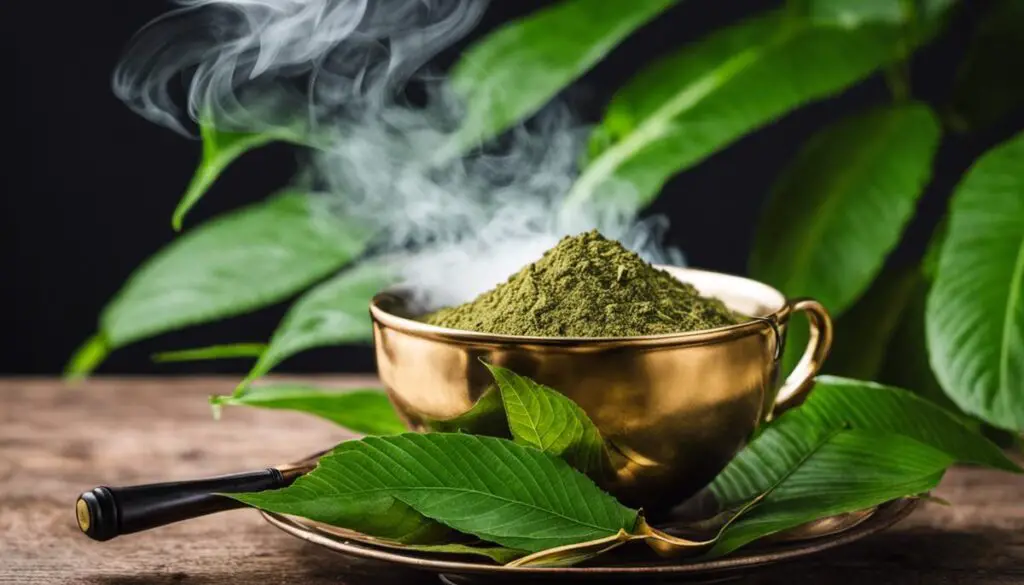HOW DO YOU TAKE KRATOM?
Introduction
Of all the many natural plants that offer unique benefits for mind and body, Kratom has made a significant impact, with more individuals exploring its potential benefits every single day. It is integral to fully comprehend the core essence, origin and range of uses that Kratom varieties offer before integrating it into your lifestyle, ensuring a secure and informed approach to enjoying.
This post explores everything from accurate dosage, how body weight and personal tolerance levels come into play, to different methods of kratom consumption that could likely align with your lifestyle choices.
What is Kratom?
Kratom, scientifically known as Mitragyna speciosa, is a tropical evergreen tree originating from Southeast Asia. It is most commonly found in countries like Thailand, Malaysia, and Indonesia. The leaves of the Kratom tree have been used for centuries in traditional medicine mainly for its stimulant and sedative effects.
Kratom is categorized into three main types: red vein, white vein, and green vein – denoting the color of the veins in the leaf.
- Red vein kratom is praised for its soothing and calming effects;
- Green vein is somewhere in the middle of the spectrum and is typically used for stimulation and euphoria.
- White vein kratom is known for its mood-enhancing benefits,
How Do You Consume Kratom?

Kratom can be consumed in several ways. The most traditional method is by merely chewing the fresh leaves – the method most utilized by native peoples in Southeast Asian regions. Other common methods include brewing the dried leaves into a tea, swallowing crushed kratom leaves in capsule form, or swallowing kratom powder with a liquid.
Dosage and Consumption
When it comes to dosage, there is no one-size-fits-all as the effects can vary greatly depending on the individual’s body chemistry, tolerance, and the strain of kratom. However, for a beginner, a small dosage of between one to two grams is often recommended. Gradually increase the dosage if you don’t experience the desired effects after 20-30 minutes.
Understanding the Effects of Kratom
Kratom’s effects are dose-dependent and can vary widely. At low to moderate doses (1-5 grams), kratom can produce stimulant-like effects similar to amphetamines or caffeine, including increased energy, sociability, and alertness.
At moderate to high doses (5-15 grams), it can have sedative-narcotic effects akin to opioids, including reduced pain, euphoria, and a feeling of calm.
Excessive use can lead to negative effects such as nausea, vomiting, constipation, and in rare cases, hallucinations or psychosis. Long-term use may result in dependency and withdrawal symptoms upon cessation.
Possible Side Effects and Risks
While kratom can provide relief for various conditions, it is not devoid of side effects or risks. High doses or prolonged use can lead to a variety of side effects, including dry mouth, constipation, loss of appetite, and an increased need to urinate. It can also lead to more severe effects like muscle pain, heart palpitations, liver damage, or seizures.
Dependency is also a major concern, especially for those already living with substance abuse disorders. Due to its opioid-like effects, kratom can lead to physical addiction and withdrawal symptoms such as irritability, muscle aches, and aggression.
You may also want to check out this post: Can You Be Addicted to Kratom?
Understanding kratom’s effects and potential risks is paramount to safely and responsibly incorporate its use into your routine. Always start with a low dose, be mindful of your body’s reactions, and consult with a healthcare professional if you’re unsure or experience undesirable effects.
HOW MUCH KRATOM SHOULD I TAKE?

Kratom, also known as Mitragyna speciosa, is a tropical tree native to Southeast Asia and it is often used for its stimulating, relaxing, and analgesic properties. However, kratom dosage can vary widely depending on several factors including weight, metabolism, genetic predisposition, and amount consumed. Understanding these factors can help one optimize the kratom experience.
Body Weight and Kratom Dosage
Generally, body weight plays a significant role in how a substance affects an individual. Similar to alcohol or other substances, the same amount may have a significantly greater effect on a lighter individual than on a heavier one. A safe rule of thumb to follow is to take 1 to 2 milligrams of Kratom per 10 pounds of your body weight.
Individuals who weigh less, between 150 to 200 pounds, might start with 5 to 8 grams of Kratom. If you weigh over 200 pounds, a starting dose between 8 to 10 grams may be more suitable. Remember to always start with a smaller dose and then gradually increase if required.
Kratom Tolerance Level
Another factor to consider is your tolerance level to kratom. If you’re a frequent user, your body may have developed tolerance to its effects. In such case, you might need a higher dose to achieve the desired effects. However, continuously increasing dosage can lead to dependency, therefore it is recommended to periodically reduce consumption or cycle different strains to lower tolerance.
Desired Effect and Kratom Dosage
Kratom’s effects can vary greatly depending on the dose taken. Lower doses usually produce stimulating effects, while higher doses are associated with more sedative and analgesic effects.
For example, at a very low dose (1 to 5 grams), kratom can act as a stimulant, giving users more energy. At moderate dose (5 to 15 grams), it can provide pain and anxiety relief. And at a high dose (15 to 25 grams), kratom behaves more like a sedative, thus providing euphoric effects.
To sum this up, the right dosage of kratom for you depends on your body weight, kratom tolerance level, and the desired effects. Always err on the side of caution by starting with a lower dose before gradually increasing. You should also remember to consult a healthcare provider or a knowledgeable kratom user before taking kratom, especially for the first time.
HOW DO YOU TAKE KRATOM?

Method One: Taking Kratom as Tea
Making tea out of Kratom leaves is one of the most popular ways to take this herb. It’s simple and straightforward: boil Kratom leaves with water for about 30 minutes, strain the brew, and drink it while it’s still warm. For added flavor, you may add honey, lemon, or your preferred sweetener. The pros of this method include the ability to adjust taste based on preference, and it is usually more gentle on the stomach. However, it may not hit as fast since it needs to be digested.
Method Two: Ingesting Kratom with Juice
Mixing Kratom powder with juice is another common consumption method. This can mask the taste, which some people may find unpleasant. Citrus juices like orange or grapefruit are commonly used. Simply add your dose of Kratom powder to your juice and shake well before drinking. This method can slightly enhance the effects as certain compounds in the juice can increase the effectiveness of Kratom. Some find this method the easiest way to take it. However, the taste of Kratom can still be detected, which is a con for those who dislike it.
Method Three: The Toss and Wash Method
This is arguably the most direct way to take Kratom. With the toss and wash method, you place your kratom dose in your mouth, toss it to the back of your throat, and wash it down with water. This method is quick and allows for almost immediate effects. However, it can be hard to swallow and the taste of Kratom is quite strong when taken in this way, making it a less pleasurable experience.
Method Four: Taking Kratom Capsules
Kratom capsules are a more modern way of taking kratom. The herb is pre-packed into capsules, which can be swallowed like any standard pill. Ratios usually range from 0.5 grams to 0.8 grams per capsule. This method is convenient, discrete, and eliminates the taste issue. However, it may take longer for the effects to kick in as your body needs to dissolve the capsules first. Moreover, capsules may come at higher prices than kratom powder or leaves.
Method Five: Other Methods
There are also less conventional methods of Kratom intake. These include mixing the powder with yogurt or applesauce, or even baking it into cookies. These methods can make taking Kratom more enjoyable, especially for those who may not like its taste. Similarly, some individuals experiment by adding Kratom powder to their protein shakes. Considering these methods, it’s vital to remember that the potency of effects may vary.
Each of these methods has its own pros and cons, so the best way to consume Kratom ultimately depends on personal preferences and lifestyle. Make sure to take only the recommended dosage, and listen to your body to determine what method works best.
CONCLUSION
Kratom is not merely a plant; it is an avenue toward improved well-being, endurance, and mental clarity, providing each user with a unique experience. However, the capacity to harness its full potential remains within the discretion of the user—awareness of the ideal strain and dosage that aligns with their lifestyle and health goals is pivotal.
As mentioned, ingestion methods vary, underlining the importance of finding the one that conforms best to your individual preferences. The journey with Kratom is deeply personal; hence, a mindful, educated approach will ensure the greatest benefit in terms of wellness and balance.
-The Educated Felon








One Comment